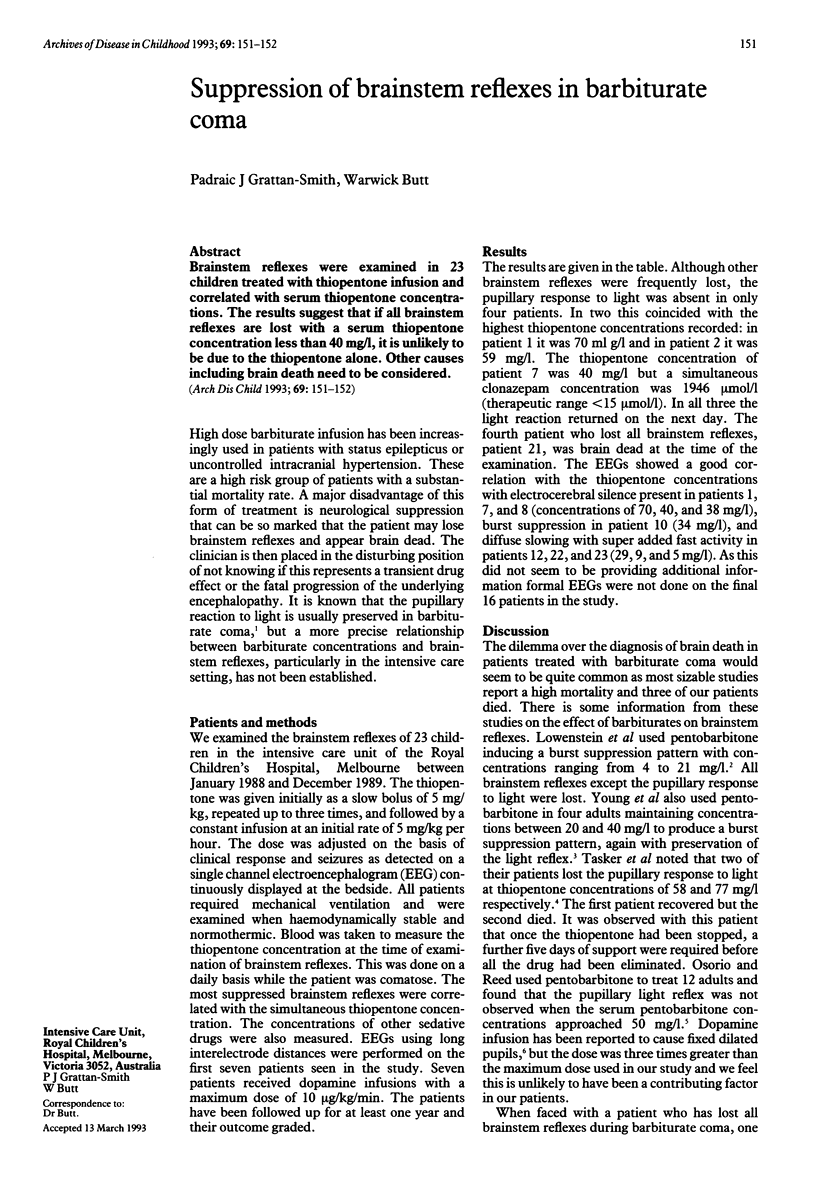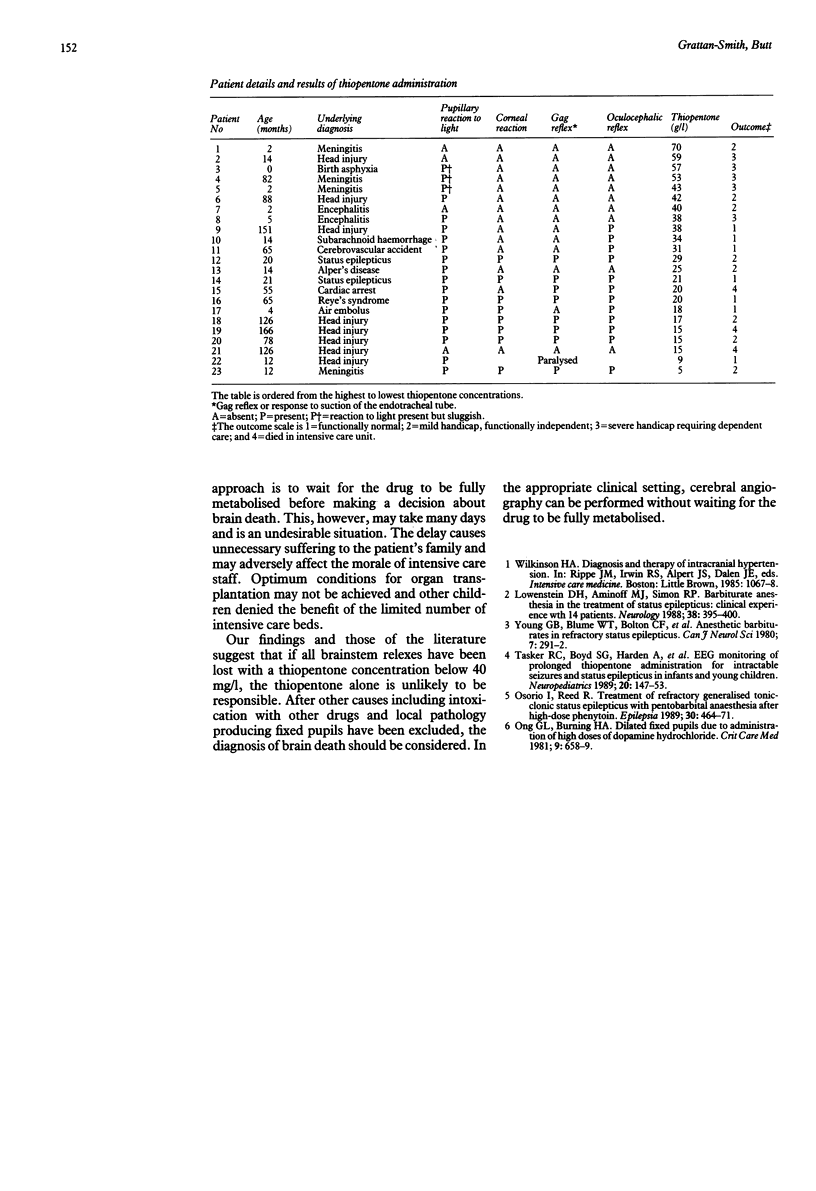Abstract
Brainstem reflexes were examined in 23 children treated with thiopentone infusion and correlated with serum thiopentone concentrations. The results suggest that if all brainstem reflexes are lost with a serum thiopentone concentration less than 40 mg/l, it is unlikely to be due to the thiopentone alone. Other causes including brain death need to be considered.
Full text
PDF

Selected References
These references are in PubMed. This may not be the complete list of references from this article.
- Lowenstein D. H., Aminoff M. J., Simon R. P. Barbiturate anesthesia in the treatment of status epilepticus: clinical experience with 14 patients. Neurology. 1988 Mar;38(3):395–400. doi: 10.1212/wnl.38.3.395. [DOI] [PubMed] [Google Scholar]
- Ong G. L., Bruning H. A. Dilated fixed pupils due to administration of high doses of dopamine hydrochloride. Crit Care Med. 1981 Sep;9(9):658–659. doi: 10.1097/00003246-198109000-00010. [DOI] [PubMed] [Google Scholar]
- Osorio I., Reed R. C. Treatment of refractory generalized tonic-clonic status epilepticus with pentobarbital anesthesia after high-dose phenytoin. Epilepsia. 1989 Jul-Aug;30(4):464–471. doi: 10.1111/j.1528-1157.1989.tb05327.x. [DOI] [PubMed] [Google Scholar]
- Tasker R. C., Boyd S. G., Harden A., Matthew D. J. EEG monitoring of prolonged thiopentone administration for intractable seizures and status epilepticus in infants and young children. Neuropediatrics. 1989 Aug;20(3):147–153. doi: 10.1055/s-2008-1071281. [DOI] [PubMed] [Google Scholar]
- Young G. B., Blume W. T., Bolton C. F., Warren K. G. Anesthetic barbiturates in refractory status epilepticus. Can J Neurol Sci. 1980 Nov;7(4):291–292. doi: 10.1017/s0317167100022769. [DOI] [PubMed] [Google Scholar]


